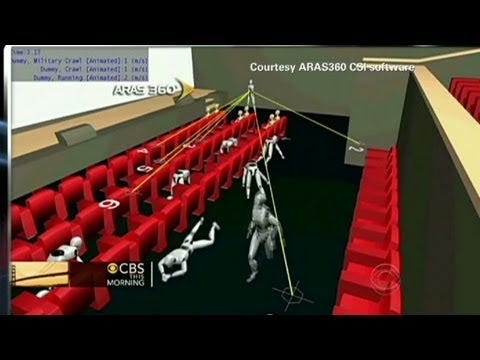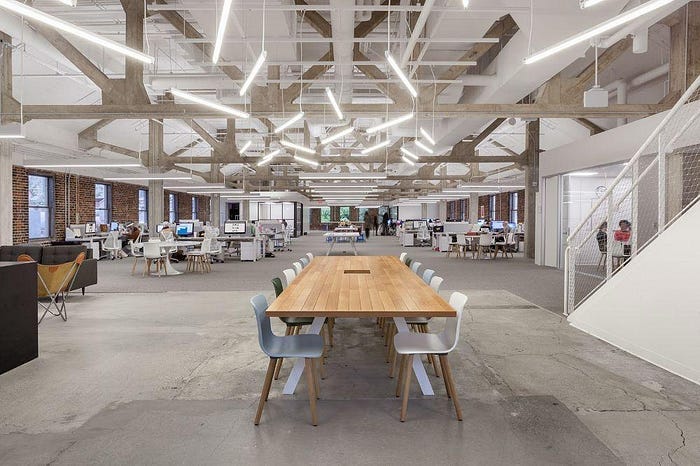Active Shooter: When you can’t run, can’t hide, and can’t fight
This simple guidance generally makes sense except for situations when all three options are nearly impossible.
The guidance from police departments across the country is to Run, Hide, and Fight during an attack by an active shooter. If you can run away, that is the best option — get as far away from the danger as possible. If you can’t run, you can try to hide from the shooter — lock and barricade yourself inside an office, closet, bathroom, storage room, or anywhere away from the shooter. If all else fails, fight the shooter in any way possible. This simple guidance generally makes sense except for situations when all three options are nearly impossible.
Areas with limited means of ingress and egress — combined with open layouts — remove the option to run or hide. Wide open areas allow the shooter to maintain distance and fire across the space preventing victims from closing the distance to fight back. These types of open areas with limited egress are common locations for public gatherings and have been the site of numerous attacks. These places include:
Outdoor Concert Venues and Arenas: To make sure that everyone entering a concert venue or arena pays for the show, there are limited points of entry to collect tickets. The stage, court, or playing field is in the center of the venue and the densest crowd is at the farthest point from the exits. The Las Vegas shooting is the most recent example of a concert shooting but there have also been explosive attacks (e.g., Manchester Arena suicide bombing during Ariana Grande concert) and stampedes. At an outdoor concert venue, there is no place to run away and nowhere to hide. If the shooter is firing down at the crowd from a high-rise hotel, there is no way to fight either. Even without the panic of an attack, crowds exiting these venues are bottlenecked due to the large number of people leaving at the same time which prevents rapid evacuation.

Nightclubs: Similar to concert venues, nightclubs are designed to funnel the crowds to central dance floors and alcohol service areas. Nightclubs usually have single points of entry because that patrons need to pay cover charges or wait in line to enter. There is normally less security and fewer staff members at a club compared to a live concert or sports arena but this varies greatly based on the size, economy, local laws/ordinances, and history of violence. The Pulse nightclub shooting is the most significant example of this type of attack in the United States. Fatal fires have also occurred at these locations including the Station Fire that killed 98 people in 2003 Rhode Island. Inside the nightclub, there are too many people and too few exits to run. There are few or no places to hide. If the shooter is firing across the venue, there is likely no way to fight.
Movie Theaters: Theaters normally have doors on the sides and aisles leading up stairs to access stadium style seating. To exit the theater, everyone needs to walk down the stairs toward the screen. A shooter standing near the screen cuts off the exits and the open room full of seats does not offer anywhere to hide. In the case of the Aurora, CO shooting during Batman, if the shooter is standing in the front of the screen and shooting at the crowd, there is no way to reach the shooter to fight.
Churches: The design of almost all churches is the same. Large doors at the front lead down a long aisle to the alter. Rows of chairs or benches line both sides of the aisle. Patrons are seated with their backs to do door, facing the religious leader speaking from the alter. Prior to the murder of 26 people in Texas this past weekend, 26 other people have been killed at four different mass shootings churches since 2007. If the shooter enters through the main doors, the primary exit is cutoff and the open area does not provide a place to hide. When the shooter enters from behind the victims, the shooter has the element of surprise and the ability of victims to fight back is limited by the tactical advantage of the shooter.
Shopping Malls: Large concourses with multiple levels and open layouts connect the stores inside shopping malls. The limited numbers of entrances and exits are normally located at the edges of the building so that patrons need to walk past as many retailers as possible to reach them. In many cases, patrons need to pass through large department stores to reach the exits. The central corridors, food courts, and areas of congregation inside shopping malls are a long distance to run and do not offer places to hide. The shooter can maintain distance from the victims and prevent the ability to fight.
Underground Subway Stations: Street level entrances and exits lead down stairs, escalators, and elevators to fare gates. Patrons congregate on open platforms to wait for trains. Long distances to the exits, some escalators can be 200 ft or longer, prevent patrons from evacuating quickly. Open spaces in the stations do not offer cover.
Open Offices: This modern office design removes private spaces and individual offices to create a workplace where people can easily interact and collaborate. Spaces for breakouts and private meetings often have all glass doors and windows to maintain the visual aesthetic of openness. By removing private spaces, the offices also remove locations to hide from an active shooter. The open space limits the ability to run or fight if the shooter has clear sight-lines across the entire office space.
What to do when you can’t run, hide, or fight?
If you can’t get away or stop the shooter, you — or the other people around you — are probably going to get shot. The good news is most active shooters attacks end in less than 2 minutes. The bad news is EMS care normally takes 8–12 minutes to arrive. I have written previously about the basic trauma kit that can save lives in these situations.
Severely injured people need rapid treatment to stop bleeding. Quickly assess the scene around you to determine who is deceased, critically injured, and walking wounded. START offers as simple system to conduct triage. If you don’t have any EMS equipment, improvise with what you have. Tampons can be used to stop bleeding from gunshot wounds. Belts can be used as tourniquets. Excess clothing can cover and control severe bleeding.
The first arriving police officers and other responders will not know where the shooter is and the status of the victims. The first priority for police officers will be to find the shooter while EMS providers will usually stage away from the scene. In many cases, the shooter immediately kills himself after shooting the first group of victims. If you have witnessed the shooter killing himself (yes himself, the shooters are almost always male), try to share this information with responders.
If the shooter is down, try to drag severely injured victims out of the building. Their best chance of getting emergency medical care is away from the immediate vicinity of the shooting. Anytime you encounter police officers, be sure to keep your hands up and follow any directions — there will be a lot of chaos and confusion until the status of the shooter is determined.
Harsh Reality
Active shooter attacks will continue to occur and many of the places that we frequent on a daily basis do not provide the options to run, hide, or fight. It is critical to understand your vulnerability in these situations and the limitations of first responders to immediately stop an attack or provide emergency medical care.
If an attack occurs, your only option may be to take action and try to save lives when the shooting stops.
David Riedman is the creator of the K-12 School Shooting Database, Chief Data Officer at a global risk management firm, and a tenure-track professor. Listen to my weekly podcast—Back to School Shootings—or my recent interviews on Freakonomics Radio, New England Journal of Medicine, and my article on CNN about AI and school security.








